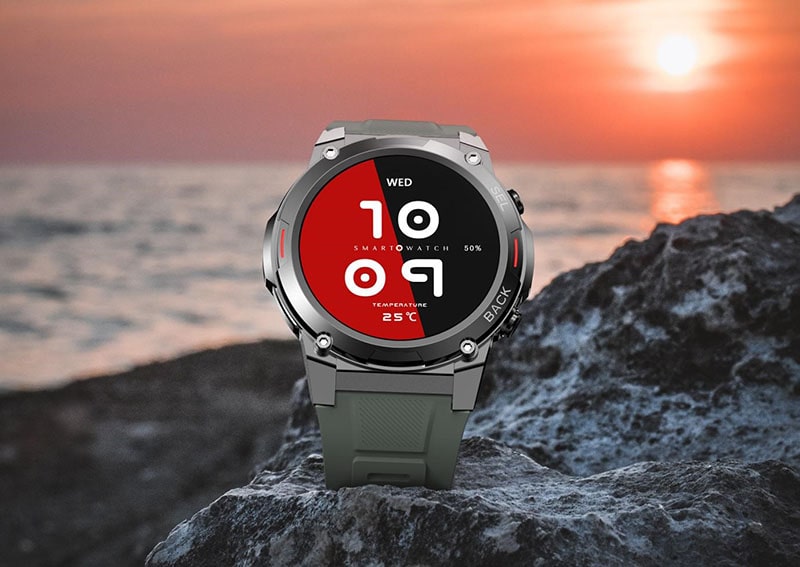Simple watches started off by only telling us how to know what time it is. However, nowadays, the smartwatches available are capable of doing so much more. From keeping track of our blood pressure levels to allowing us to send texts or even play games; these watches have revolutionized the way we go about our day.
In today’s era, there has been a huge move towards focusing on health and fitness. And smartwatches are largely responsible for this. After all, it is making everyone’s life easier!
Whenever you see people going on a jog or at the gym, they will always have a smartwatch on. Through this, they will know how well they are performing, and they can keep track of their fitness goals.

One of the main aspects of fitness that smartwatches track is the amount of steps you take every day. Using several sensors and algorithms, they measure this and pass those details to you. However, do you know how these sensors and systems work?
Let’s move on to figure out more about how these smartwatches actually work.
The Tools Behind Tracking Steps
Now it is no surprise that smartwatches are filled with many different sensors and algorithms. To understand how your watch knows how many steps you have taken, you just need to know about two sensors: The accelerometer and gyroscope.

Accelerometer
Just like the name says, this sensor is more focused on keeping track of your acceleration. Simply put, if you start moving faster or slower, the sensor can pick up this change in order to help calculate how many steps are taken.
By keeping track of your acceleration, this sensor can make out between different actions whether you are running or climbing stairs. In smartwatches, you will often find a 3 axis accelerometer. This version of an accelerometer is a lot more accurate as it judges the changes in your speed in three different axes.
Gyroscope
If you have ever played any first person game, you must have seen a setting option called a gyroscope sensor. When this option is turned on, you can look around in the game simply by moving your screen. When you turn left in real time, your character will also turn left in the game.
A gyroscope is used to keep track of a person’s angular velocity. So, when you are walking or running and change directions, this sensor will know and keep track of it.
This sensor is also useful for when you are going on longer journeys such as hikes. When you climb higher areas, you are going to end up making more complex movements. Usually, it will be difficult for your watch to pick up the difference between a sudden arm movement and an actual step.
With the gyroscope, your smartwatches can accurately track where you are going.
The Systems Calculating Your Steps
Now that we have covered the basics of which sensors are responsible for picking up the number of steps you take, the next topic is the algorithms that combine data. After all, nothing is complete without AI.
When it comes to the steps, the main algorithm to focus on is MEMS or microelectromechanical systems. The MEMS work alongside the accelerometer to measure changes in acceleration on the three axes.
When you take a big forward step, that counts as acceleration along the forward axis. Similarly, if you start marching with your knees up high that is counted as you are accelerating in the vertical direction.
These movements are made more accurate using the gyroscope. This is because the gyroscope can keep track of the direction and angle of movement.
Once these factors are measured, the background algorithms start working. They measure the highest and lowest number of accelerations in all three axes. We will assume that there are a given set of samples or steps, which is 50.
This number will keep changing depending on how fast you are generally moving. When you take a step, and it crosses lowest acceleration required, it is counted as a step.
However, there is an issue with this. If you move your hands fast enough, that will also be counted as a step. To avoid this problem, these algorithms will start involving time periods.
Think of these like the number of steps you are making in a given time. Now, if you are slowly walking around, the system will keep track of it. And if you start moving your hands around quickly, that will go against your average walking speed. This quick movement is then ignored in order to measure the steps taken more accurately.
Ensuring That Your Steps Are Calculated Accurately
Once you have understood how the background systems work, you also need to learn how to ensure accuracy. This is done through calibrations. Depending on the smartwatch being used, calibration can either be done once or multiple times.
When trying to make sure that your watch is very accurate, you will need to provide a test run. Here, the number of steps you take while walking or running are measured. The way your arm moves around is also measured to ensure that it does not mess up the step readings.
Other watches also allow users to customize their fitness apps. Here you can input your personal information such as weight and height. In turn, that can be used to accurately calculate your steps.
During customizations, users can also pick modes that allow for more accurate readings. Going on a run? Let your watch know! This way it can distinguish between slower and faster steps.
To get very accurate readings, it is recommended that you stick to automatic calibrations. This way your smartwatches will continue collecting data. This is the best way to go as your watch automatically updates depending on the scenario you are in.
On a run? Your watch already knows since you are moving pretty fast. Once you are done, the change in speed will be measured to calculate your steps while walking.
Get the perfect smartwatch to fit your fitness needs!

















